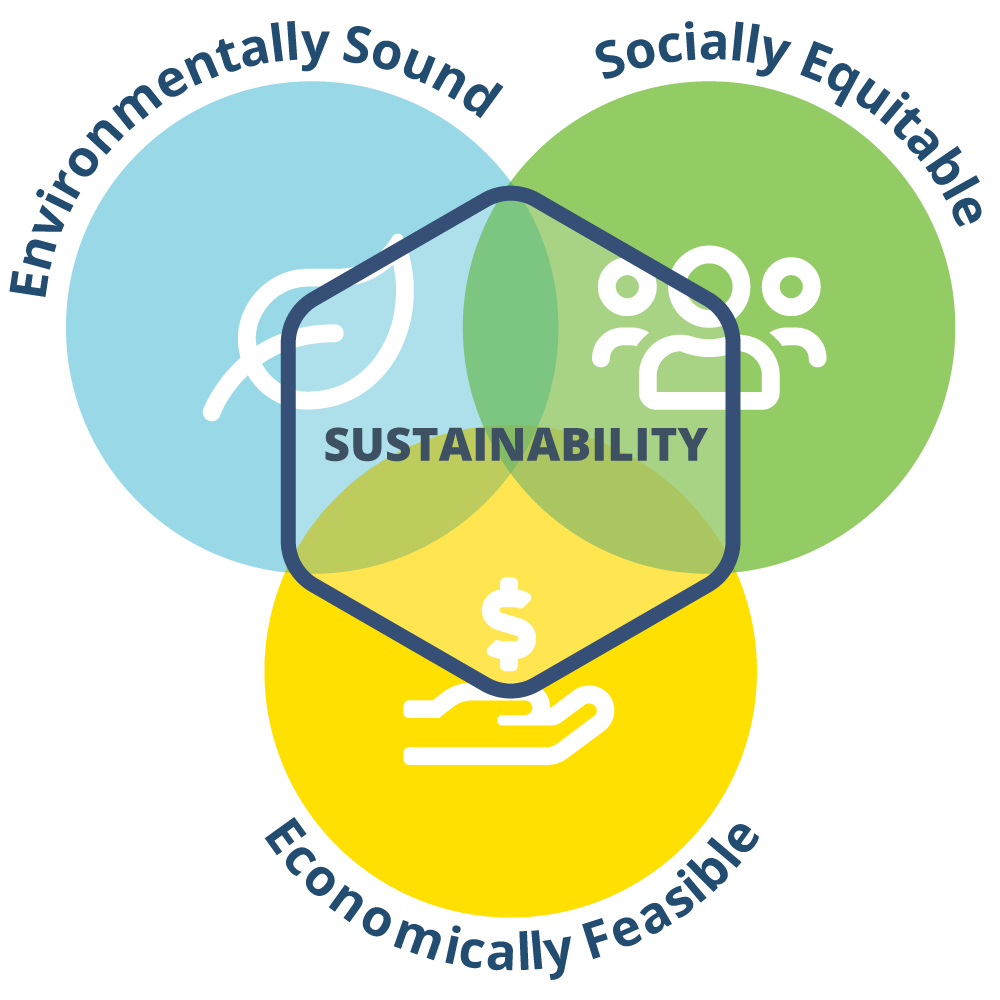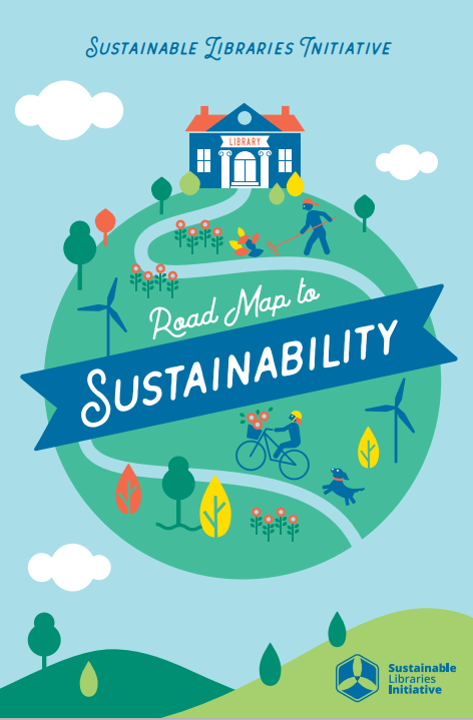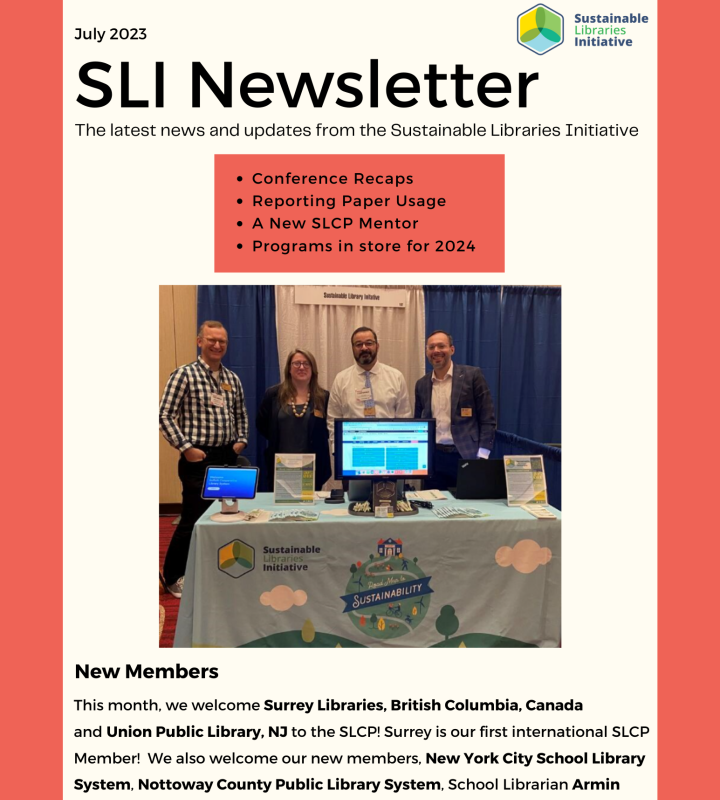Sustainability 101
This article is part of the series of resources and webinars created by the Sustainable Libraries Initiative team, in collaboration with WebJunction, to support libraries in creating a more sustainable future.
As we think about the future of our libraries and how we, as library leaders, help to make a difference in the lives of our neighbors, we must confront the realities of climate change. No corner of the world will be left untouched by climate change. The 2019 report of the Lancet Countdown, a widely respected publication in the medical community, noted that “The life of every child born today will be profoundly affected by climate change. Without accelerated intervention, this new era will come to define the health of people at every stage of their lives.”
Not so coincidentally, also in 2019, the American Library Association named sustainability a core value of the profession. As a core value, sustainability joins the ranks of access, intellectual freedom, and the public good as key values to focus on as we do our work. This step was taken to acknowledge that societal efforts to respond to climate change have not expanded in the manner needed to avoid substantial damage to the economy, environment, and human health over the coming decades. The organization also acknowledged more than 6,000 scientific studies that had found the immediate consequences of climate change are far more dire than originally predicted, calling for the transformation of the world economy at a speed and scale that has “no documented historic precedent.”
In the face of such serious predictions, we are all called upon to do what we can from our personal sphere of influence, and to act with urgency.
“Every job is a climate job,” a phrase coined by Drawdown Labs Director, Jamie Beck Alexander, asks us each to recognize the influence we have in our role, industry, or the level we serve at in an organization. As a library leader (and yes, we believe that all library workers and trustees are library leaders), you have a sphere of influence over your workplace or through your service on the board as a trustee. The choices we make must be leveraged to not only ensure that our libraries are thriving into the future, contributing to co-creating communities that are sustainable, resilient, and regenerative.
Defining Sustainability
Both the American Library Association and the Sustainable Libraries Initiative use the “triple bottom line” definition of sustainability which can serve as a framework to shift your mindset as you make decisions at your library:
The “triple bottom line” shifts thinking from purely economic—how much will this item, decision, action cost economically—to one of balance. The goal is to find balance in our decision-making among the three elements of the triple bottom lines of environmental stewardship, social equity, and economic feasibility. No one action caused climate change but a confluence of economic decisions, lack of environmental stewardship, and lack of care or understanding of how decisions will impact humans, all have ties to the extreme environmental impacts that we are experiencing today.
This is a big topic. It can feel overwhelming, and, at times, you may swing from feeling absolutely powerless to enraged on behalf of the next generation that will suffer in the face of what has been done to the environment. But we have to find hope for the future in our ability to impact the present through thoughtful choices made today. We must assess our personal and professional situations and decide what we can do from our own spheres of influence.
As you proceed with making decisions on behalf of your community, here are a selection of questions to ask yourself. Are the choices your library is making:
- Resulting in treating library workers, library patrons, and community members with dignity, empathy, and respect?
- Considering the natural resources of our world?
- Celebrating localism and investing in the local economy?
- Creating healthy indoor and outdoor environments?
- Respecting taxpayers’ or donors’ investment in the library?
These questions do not usually stand alone; they need to be overlaid to work towards a balanced intersection of the three areas of the triple bottom line.
At the end of the day, the environmental impacts we are witnessing attributed to climate change were caused by economic decisions that greatly impact marginalized and vulnerable communities. It’s all connected. We can’t just “go green,” and expect things to change. We must address the holistic issues that have added up to the modern understanding of climate change and systemically address root causes while simultaneously adapting in the face of what is already happening.
As libraries proceed into this new era of climate change, we need to consider how the choices we make impact others, not just in the workplace and our local communities and campuses, but in the global community as well. We must live by example, personally and professionally to inspire respect, investment, and partnerships that it will take to increase community resilience in the face of climate change.
Forging a Path Forward
The Sustainable Libraries Initiative (SLI) provides library leaders with a proven path forward to co-create libraries and communities that will thrive in the coming years. The Sustainable Library Certification Program (SLCP) and the SLI community of practice enable your library, and ultimately your community, to become more environmentally sound, socially equitable and economically feasible.
These resources can help your library team develop a more expansive understanding of how to support sustainability initiatives. In the Road Map to Sustainability, core concepts such as the “triple bottom line” definition of sustainability and the phrase “sustainable thinking” are defined. The award-winning SLCP was created to provide a methodical way for libraries to consider the application of the triple bottom line of sustainability throughout twelve categories of decisions—from how a facility is constructed and operated, to policymaking, to library service, program, collection, and partnership choices.
The most exciting part of the SLI is the growing community of practice, with more than 100 libraries actively working through the program. The body of examples, solutions, and great ideas grows almost daily. You can learn from those libraries who have finished the certification by checking out their final presentations. Members of the SLI community are featured throughout the WebJunction-SLI webinar series on sustainability so you can hear from the practitioners themselves.
Inspired to learn more?
Subscribe to the free, monthly newsletter of the Sustainable Libraries Initiative for more ideas, stories from the field, and resources to help your library and community become more sustainable.
Webinars in the series
Visit each listing for recordings and handouts and use the Series Learner Guide (doc) together or with others, to take action on your learning.
Sustainability 101
Recording now available
Climate Action Planning (Part 1): An Introduction
Recording now available
Climate Action Planning (Part 2): Disaster Preparedness and Community Resilience
Recording now available
Climate Justice
Recording now available
Living Our Values Out Loud: Programs that Walk the Talk
Recording now available
Stronger Together: Collective Impact and Climate Action Programming
Recording now available



